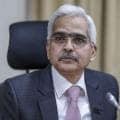India’s monetary boss is so certain he will be raising interest rates again soon, he called it a “no-brainer. ” The only things missing from the forecast were the dates and magnitude. That’s how specific the prescriptions from policy makers around the world have become.
Long caricatured as dour mandarins who like to hedge their bets, central bankers have discovered the power of declarative statements. They would do well to consider the pitfalls. As frank as he sounds, Reserve Bank of India Governor Shaktikanta Das is on the opaque end of rapidly evolving central bank communications.
The urgency of the battle against inflation has propelled usually taciturn policy makers to startling degrees of candor. While more information is generally better than less, such openness brings risks. If a course correction is required in response to, say, mounting evidence of a recession, it will make the shift very jarring.
The more policy intents are flagged in advance, the harder and more abrupt the turn. If forthrightness is crafted to shut down debate, that’s a troubling development. Most central banks are required by statute to come to decisions via regularly scheduled meetings of policy committees.
When the stakes are so high, solo acts can be problematic. Prior to the flaring of inflation, banks were critiqued as too insular and fatally attracted to their models and forecasts. Officials acknowledged they were surprised by the strength and staying power of inflation.
How do pre-announcements in blog posts, testimony to lawmakers and interviews foster the healthy debate that might mitigate groupthink? Central bank chiefs appear to have concluded that’s a problem for another day. Just hours after Das made his remarks in an interview with CNBC TV18, European Central Bank President Christine Lagarde dropped a bombshell in a blog post. The ECB will start lifting rates in July and be done with negative rates by the end of September, she wrote.
Her preemption miffed some colleagues who desired more robust first steps. Inflation in the euro zone is now running at 7. 4%, miles above the target of about 2%.
While Lagarde’s edict was unusual in the context of the ECB, which has been strafed in the past for cumbersome decision-making, the content of her message was par for the course on a broader stage. Sitting with Lagarde at a panel in Washington last month, Federal Reserve Chair Jerome Powell fired a broadside of his own. “I would say 50 basis points will be on the table for the May meeting,” he told the forum.
Of course, Powell knew that by putting his prestige on the line, a 50 basis-point increase was more than merely an option. Low and behold, the Federal Open Market Committee lifted the benchmark rate by that amount on May 4. Powell said at his press conference that day that moves of a similar magnitude were in the works for the June and July meetings of the FOMC.
He reiterated that call the following week in an interview with the Marketplace public radio program. If the outlook changes materially, does he pre-announce smaller increments? It’s entirely reasonable that someone display leadership in tough times. The last thing the public needs is chaos.
Fed speakers are on the circuit a lot, but not all of the views expressed are consequential. The group to watch is composed of the chair, vice chair and head of the New York Fed. But there has always been a process, discussion and, at least, the pretense that decisions are taken by committee with a published vote.
This shift is remarkable when you consider that, not so long ago, there was a case for retiring or scaling back forward guidance. This level of communication, which was elevated to an art form after the 2008 catastrophe, was designed to assure the public about the path of borrowing costs months or years in advance. It was only possible because the horizon looked clear: The era of lowflation was upon us.
Price increases hadn’t surged despite the massive easing during the global financial crisis. Covid was, initially, a demand shock. That made policy makers even more confident about emphasizing job gains from easy money rather than vigilance against inflation.
“The forward guidance, I think overall, on the margin, slowed the response of the Fed to the inflation problem,” Former Fed Chair Ben Bernanke told CNBC recently. “In retrospect, yes, it was a mistake and I think they agree. ” Reserve Bank of Australia Governor Philip Lowe was on to something when he announced this month a thorough review of forward guidance.
He wants to scrutinize how it has been used and the manner of its future deployment. It’s the least Lowe can do, given how quickly inflation caught up with him and how dramatically he had to alter course. For much of last year, Lowe was waving off a move before 2024.
In recent times, central bankers have stressed the need to be nimble, humble even. That’s fine. Recent mistakes warrant some humility.
It’s hard to square that with pre-announcing decisions as far off as late September. A damning remark uttered by the first ECB president, Wim Duisenberg, in 2001 comes to mind: “I hear, but I do not listen. ”.
From: business-standard
URL: https://www.business-standard.com/article/finance/should-central-bankers-consider-pitfalls-of-making-declarative-statements-122052600121_1.html



